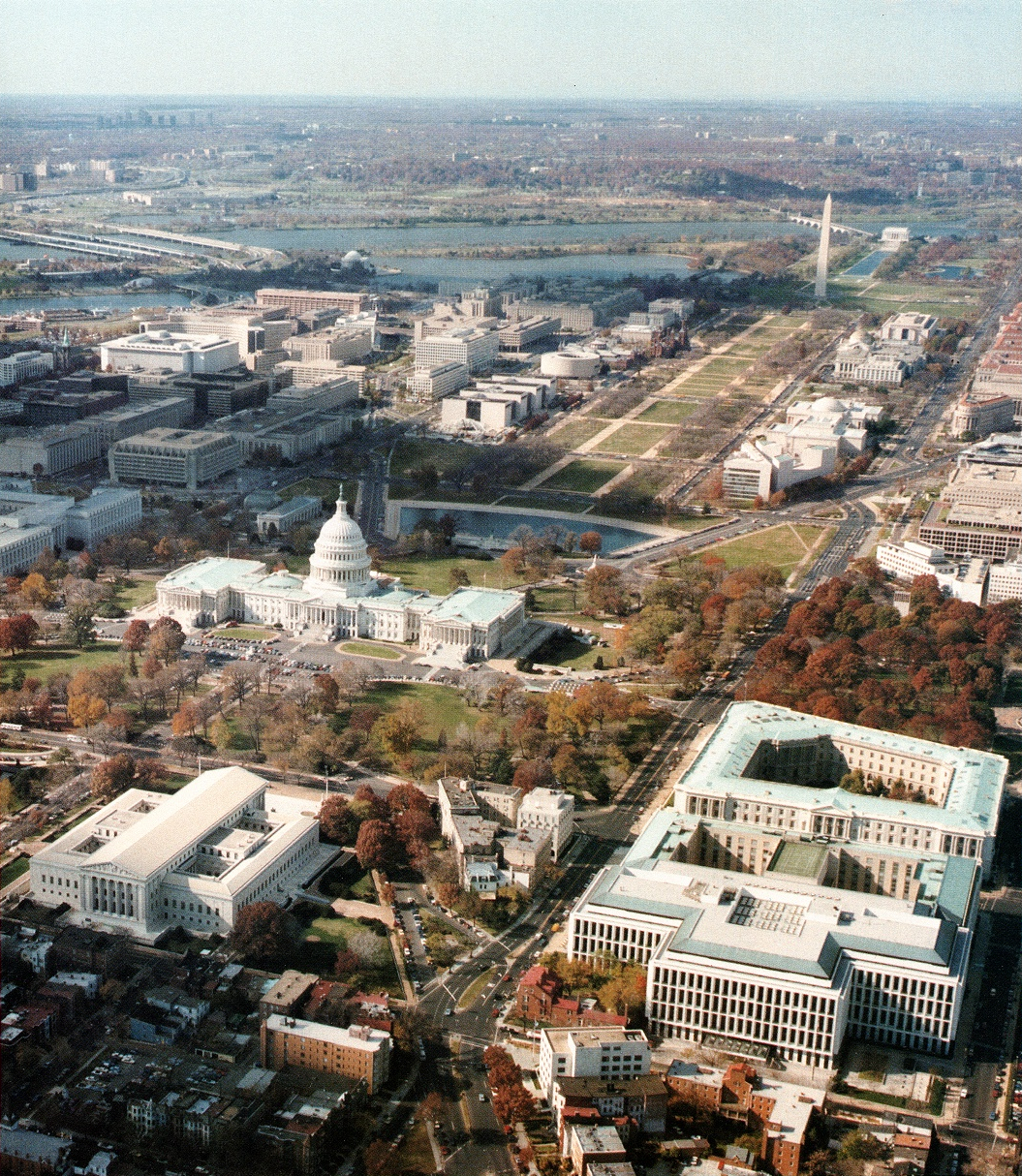View of the U.S. Capitol and the National Mall
Credit: Architect of the Capitol's Office; licensed under public domain via Wikimedia Commons
Understanding urban policy today—or public policy more generally—requires understanding how policymakers use economics and public finance to reach conclusions or make suggestions. The goal of public policy is to ensure that social costs of producing goods or services are equal to their social benefits. When social costs exceed social benefits, this suggests a market or government failure that requires a public-policy intervention. In turn, policy interventions often focus on getting the right price for a particular good or service in order to arrive at an efficient market outcome.
The pricing of traffic congestion is a good, if oversimplified, example of public-policy thinking. (Those from anywhere on the political spectrum will likely find many things to disagree with in the parsed-down analysis that follows.) Traffic congestion is a result of the overconsumption of roadways and a sign of economic vitality, and the highest rates of congestion occur in America’s largest and most productive cities (New York, Los Angeles, Washington, D.C.). However, traffic congestion, left unchecked, can increase the societal cost of traveling and ultimately reduce economic productivity.
One explanation for the overconsumption of roads is that drivers are not paying for the true costs of our streets and highways. Research indicates that current user payments account for only about eighty to ninety percent of the government’s cost. To make up the difference, gas taxes would need to increase by twenty to seventy cents per gallon. This underpricing of roadways encourages overconsumption. The result is a market inefficiency known as a negative externality—an effect that imposes costs on society that are not accounted for in the private costs involved in a particular transaction.
One public-policy solution to reduce or eliminate this negative externality is to change the price of roadway usage in order to reflect its true costs. To decrease congestion, we could increase the price it costs drivers to use highways. The price of using the congested highways thus represents the negative externality that was not included in the market mechanism.
Raising the price of highway usage reduces traffic congestion. Some drivers will elect to find alternative ways to get around or travel less while others will have no choice but to pay the increased cost of using highways. Assuming benefits and costs are captured, getting the prices right leads to a socially optimal outcome—reduced traffic congestion and the internalization of the spillover effect. If users, not society, pay for the cost of overconsumption of the roads, then social costs equal social benefits. Or so the theory goes.
However, it's famously difficult to model complexity in the market. The challenges of implementation—coalition building, juggling public opinion, navigating politics—seldom fit neatly into a model. And since congestion pricing has yet to be implemented at a large scale in any American city, it remains a theory in spite of its predominance in debates among urban-policy analysts.
Further, a strict market perspective on public-policy issues downplays Jane Jacobs’s notion of “organized complexity.” As Bruce Katz and Jennifer Bradley point out in their book The Metropolitan Revolution, the federal government and state agencies are “hyper-political and partisan, hopelessly fragmented and compartmentalized, frustratingly bureaucratic and prescriptive.” Thinking only in terms of prices, market, and government failure narrows our perspective. Instead of recognizing the critical concept of interdependency when crafting effective urban policy, Washington is too often divided in hardened silos and separate camps.
The charge that Washington is too insular is nothing new, but it is especially true when it comes to the field of urban policy. Analysts who head straight for urban policy jobs in Washington without first working within their own local communities are probably not going to be able to understand the perspective on the ground, or what real communities need. The market-based perspective is useful for thinking about communities in the abstract and works well with Washington's tendency to view all problems from high in the air. But effective policymakers need to understand how American communities work.
Urban policy is ever-changing. There are countless numbers of actors—lobbyists, associations, think tanks, foundations, academics, and government officials at all levels—who influence urban policy. But the future of urban policy will be determined by communities, not by think tanks. My next post will take a closer look at the different groups in Washington and how they inform urban policy. I hope to illustrate how the complexity of Washington can position a community to take a stronger role in its future.
Malcolm McGregor is a graduate student at the Frank Batten School of Leadership and Public Policy at the University of Virginia. He has interned at the Department of Commerce, Economic Development Administration, in Washington, D.C.
